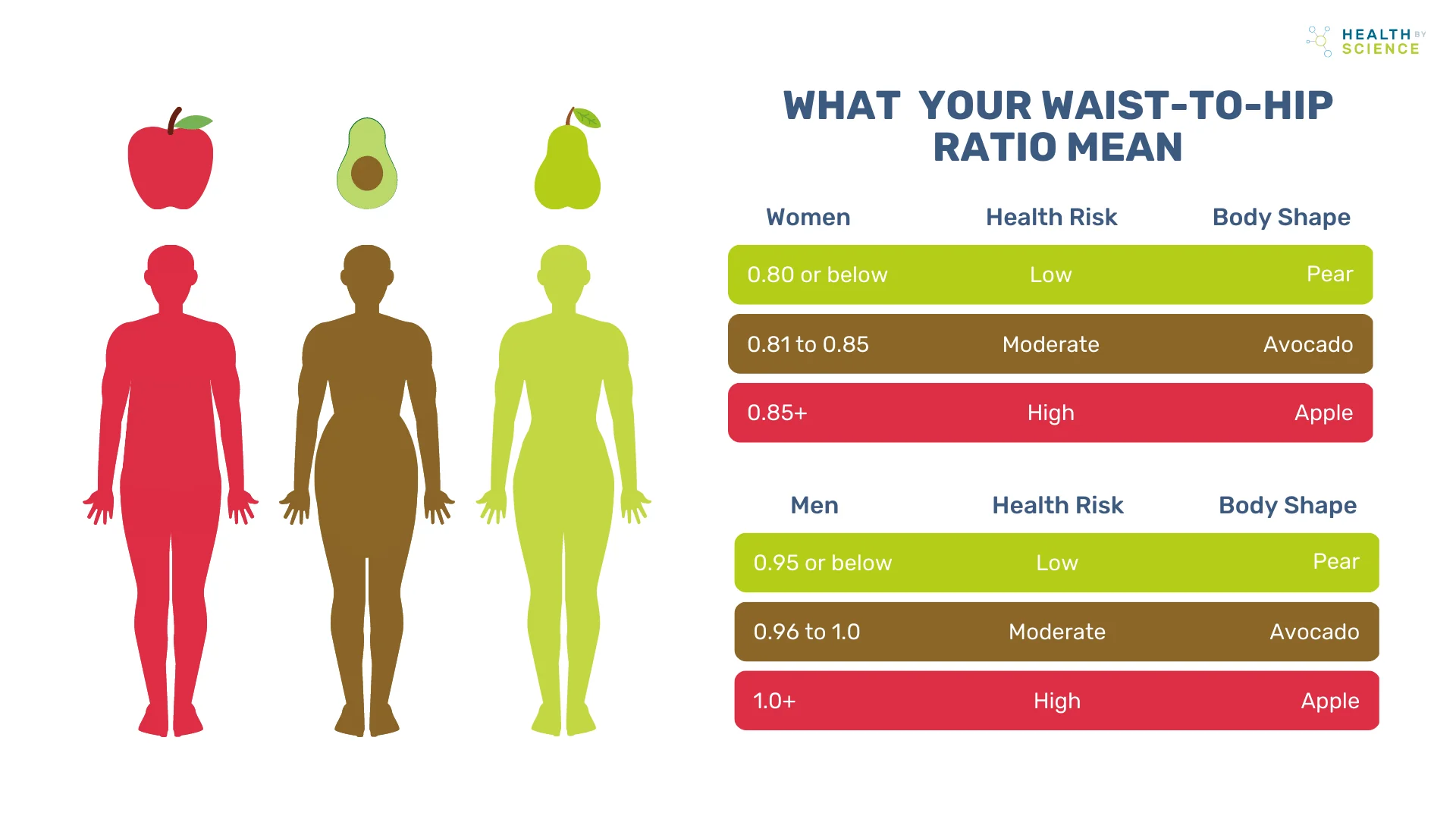Use Our Hip Waist Ratio Chart to see if you have a Healthy 0.7 Waist to Hip Ratio
When assessing your health, do you use a Hip Waist Ratio Chart to see if you have a healthy 0.7 waist to hip ratio?
You are probably wondering if you have a healthy waist to hip ratio, but don’t know where to start.
It can be confusing to try and figure out how to measure your health, especially when there are so many conflicting opinions on what’s healthy and what’s not.
In this blog, we provide an easy-to-use hip waist ratio chart that will help you determine if you have a healthy 0.7 waist to hip ratio. Our chart is based on scientific research, so you can trust that our results are accurate.
We’ll also be answering the following questions:
– Why use the Hip Waist Ratio Chart?
– How do you Calculate Hip Waist Ratio?
– Is 0.7 Waist to Hip Ratio Idea?
– What is an Unhealthy Hip to Waist Ratio?
– What Other Health Measures Should You Use?
Why use the Hip Waist Ratio Chart?
Many people simply stand on a scale and use a BMI with age calculator to determine if our weight is healthy.
Unfortunately, this focus on weight alone can be misleading as it doesn’t always give an accurate indication of overall health.
A Hip Waist Ratio Chart is an important measure of health that can help to provide us with more insight; waist measurements are divided by hip measurements and depending on the ratio achieved, we can determine our level of risk for disease.
This calculation indicates whether fat is distributed mainly around your stomach or around your hips, and if stored in the former, it can be a sign of increased health risks. We therefore encourage our Personal Training and Physiotherapy clients to pay attention to the Hip Waist Ratio Chart rather than focusing exclusively on weight.
In fact, your waist-to-hip ratio may be a better measure of your health and risk for disease than your weight alone.

How do you Calculate Hip Waist Ratio?
The waist to hip ratio measures the smallest circumference of your waist (about 1cm above the belly button) and the largest circumference of your hips in cm.
The waist measurement is then divided by the hip measurement to give you an overall number.

Unlike other measurements, the Waist to Hip Ratio is easy to measure and there aren’t daily fluctuations (assuming consistency in time of day, clothes worn and when you last ate).
This means any changes which have occurred have done so slowly, and therefore are more reliable and valid (in contrast, some measurements like body impedance devices that have a very high error margin).
Is 0.7 Waist to Hip Ratio Ideal?
The debate of what constitutes an ideal waist to hip ratio (WHR) has been up in the air for years. Though there is little scientific consensus about whether 0.7 WHR is indeed considered ideal for males and females, some have argued that this is the optimal ratio for health, beauty, and fertility reasons.
Research has shown that a higher WHR increases mortality risk factors, including cardiovascular disease and diabetes; however, an extremely low WHR can also be associated with poorer health outcomes.
For these reasons, it’s critical to understand that the “ideal” on a scale may not necessarily equate to “healthy”: good health practices such as nutrition, sleep, stress and exercise should be your priority regardless of your WHR. If you struggle to make changes in these areas, our Personal Trainers in Edinburgh are always here if you need help.
What is an Unhealthy Hip to Waist Ratio?
Another benefit of the waist to hip ratio is it can calculate what risk a person is for developing heart disease, type 2 diabetes and even mortality!
The reason for the risk comes down to visceral fat, which is fat around the organs.
Those with an ‘apple’ body shape (more weight carried around the midsection) have higher levels of visceral fat compared to those who have a ‘pear’ body shape (more weight carried around their hips and legs).
Pear shaped body types have higher amounts of subcutaneous fat (that’s fat on the outside of your muscles) which comes with fewer health risks than being an apple shape with higher visceral fat (that’s fat around your organs).
What Other Health Measures Should you Use?
Waist to hip ratio is a great tool for understanding the overall state of your health. Knowing your ratio can help you identify potential risks, such as those associated with being overweight or at risk of chronic disease.
However, it’s important to remember that your waist to hip ratio will only tell you so much – ultimately, it’s the things we do on a daily basis that determine our physical and mental wellbeing.
Incorporating practices like Sports Massage can significantly enhance this by promoting relaxation and addressing muscle tension, supporting your overall health journey.
By measuring your health habits, whether it be exercise frequency, sleep quantity or dietary habits, you’ll get an in-depth understanding of what sort of shape you’re really in.
Learn How to Use Our Hip Waist Ratio Chart For a Healthy 0.7 Ratio





